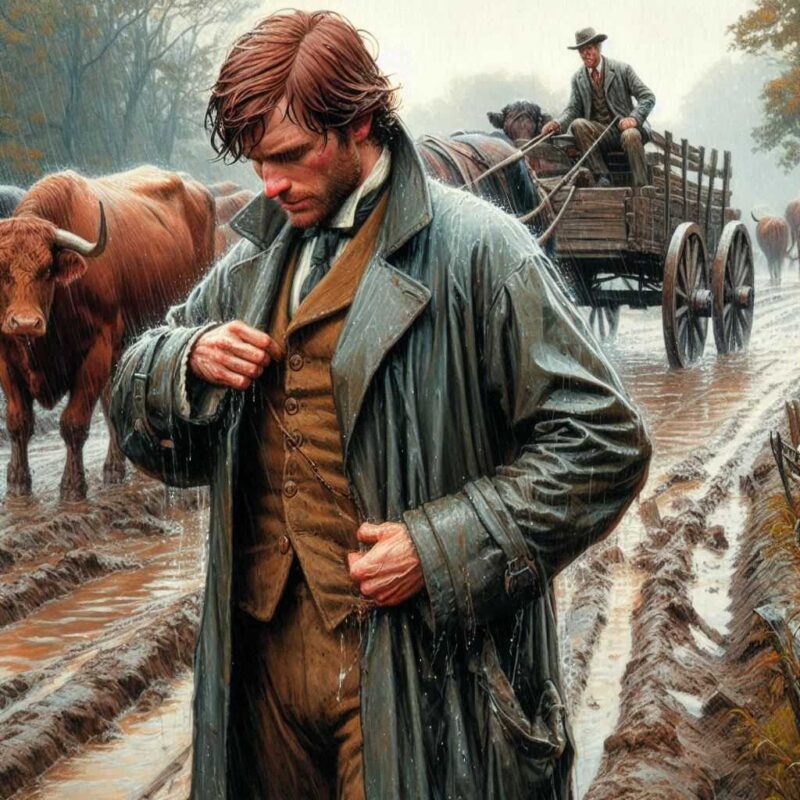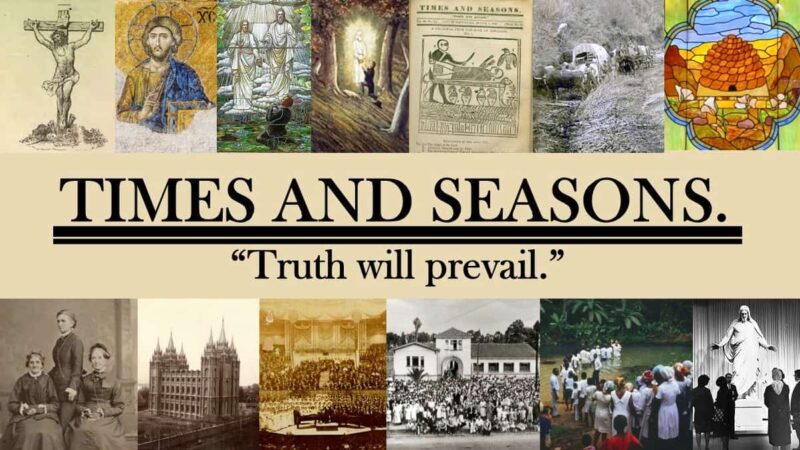I’m in the midst of pushing to finish a draft of my biography of Zerah Pulsipher and thought it would be fun to share a few items here and there that I found interesting or funny while I’m working on it. Today’s post is about the laborious journey across Iowa in the spring of 1846, concluding with a humorous story about Brigham Young claiming things were first-rate before trying to pull out a handkerchief and realizing that the pocket was full of water.
When spring finally did break in 1846, Zerah Pulsipher moved forward with other Church leaders in a pioneering company crossing Iowa. The biggest problem the company faced was that the spring weather was incredibly wet. Sudden melting snows, almost constant rain, swollen creeks, and vast stretches of mud made the journey difficult. Zerah recalled that: “storms and tempests opposed our march ’till later in the season,”[1] and that “such a flood, storm and rain followed us as I never saw in any country. . . . The highest and driest land that was in the country was soaked with water so that it was difficult to get along with a wagon.”[2] Zina D. Huntington Young would recall that it was a “tedious journey … in the face of the fierce winds of departing winter, and amid rains that fairly inundated the land. By day we literally waded through mud and water, and at night camped in anything but pleasant places.”[3]
The journey was particularly hard on the livestock upon whom the Latter-day Saints relied. Charles recalled that “there was so much snow and rain that we made very slow progress. It took us the most of the time to pull the teams out of the mud and as their was no hay to be got, we cut down cotton woods for them to eat the bark off the tops and then with their grain they managed to live but hard fare for them to work hard and stand out without any shelter and not much to live on.”[4] Eliza R. Snow also wrote that “We were traveling in the season significantly termed ‘between hay and grass,’ and the teams, feeding mostly on browse, wasted in flesh, and had but little strength; and it was painful at times, to see the poor creatures straining every joint and ligature, doing their utmost, and looking the very picture of discouragement.”[5]
Occasionally, the rain and mud made for humorous moments and memories. For example, Brigham Young quipped in late March that they had passed through only one mud hole that day “which was about six miles in length.”[6] Zerah wrote later that:
One morning, got on my horse and rode back a few miles to see how the company were getting along. It rained like a sheet. I saw a man ahead, walking with a box coat on, a indorubber [likely a Mackintosh coat.] When I came up with him I found it was Brother Brigham. I asked him how they got along. He said, ‘first rate,’ he said. He put his hand in his pocket for his handkerchief and his pocket was full of water.[7]
Such anecdotes indicate how thoroughly wet their journey across Iowa was.

Footnotes
Spelling and punctuation modernized.
[1] ZP Autobiographical Sketch #2.
[2] ZP Autobiographical Sketch #3.
[3] Edward W. Tullidge, The Women of Mormondom (New York: Tullidge and Crandall, 1877), 328.
[4] Pulsipher, Charles, 1830 – 1915. Charles Pulsipher reminiscences, https://catalog.churchofjesuschrist.org/assets/9a417b71-f011-468e-8366-b474f1a60a87/0/0?lang=eng.
[5] Tullidge, The Women of Mormondom, 312.
[6] Elden J. Watson, Manuscript History of Brigham Young, 1846-1847 (Salt Lake City: Elden Jay Watson, 1971), 106.
[7] ZP Autobiographical Sketch #3. The coat was likely a Mackintosh coat, which was made waterproof by sandwiching rubber between two layers of fabric. They were popular clothing items in the UK during the time that Brigham Young served his mission to Britain. A box coat is a heavy overcoat worn for driving.
